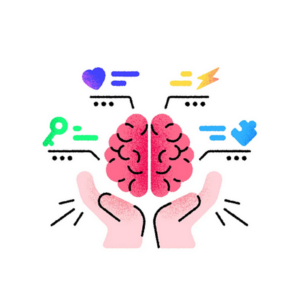In the rapidly evolving digital age, user experience (UX) design has become an indispensable tool in creating engaging and efficient user interfaces across various industries. One such crucial domain is healthcare, where applying UX principles can make a significant impact on people’s lives. At our design agency, we specialize in healthcare UX design, using design thinking as our backbone to create solutions that revolutionize the way patients and healthcare providers interact.
Harnessing the power of design thinking
Design thinking is an empathetic and iterative approach that puts the user’s needs at the forefront of the design process. It involves understanding the user’s perspective, defining their problems, ideating on possible solutions, creating prototypes, and testing these solutions with users. This human-centered methodology plays a crucial role in our healthcare UX design process.
Our journey in healthcare UX design
Our work in healthcare UX design is about integrating design thinking to create intuitive, easy-to-use, and effective digital health solutions. Whether it’s improving electronic health records, redesigning patient portals, or developing telehealth apps, we ensure that our designs are patient-centric, accessible, and meet the stringent requirements of the healthcare industry.
Empathy in action
The first step in our design thinking process is empathy – understanding the user’s needs, pains, and motivations. In the realm of healthcare UX, this means we put ourselves in the shoes of patients, doctors, and other healthcare staff to understand their unique challenges and needs. We conduct detailed user research using interviews, surveys, and ethnographic studies and synthesize these findings to guide our design process.
Defining the problem
Next, we define the user’s problems. In one of our projects, we discovered that the patient’s primary issue was not being able to easily find pertinent information on the healthcare provider’s portal. The portal’s poor navigability and complex jargon were discouraging patients from using it, leading to lower engagement rates.
Ideating and prototyping
Armed with our insights, we ideate and create prototypes to address these problems. In our example, we used our expertise in healthcare UI UX to restructure the information architecture of the portal, simplifying navigation. We also replaced medical jargon with plain language to make the content more understandable.
Testing and iterating
We then tested the prototype with actual users. Through usability testing, we identified areas of improvement, iterated on the design, and then tested it again. This iterative cycle is a crucial part of design thinking and ensures our healthcare UX designs are continuously refined and improved.
The impact of our work
Our design thinking approach to healthcare UX design has led to significant improvements in user engagement, satisfaction, and overall healthcare delivery. In the case of the patient portal redesign, we saw a 75% increase in user engagement, with positive feedback on the portal’s improved navigability and understandability.
These results are not outliers. Our design thinking-based healthcare UI UX solutions have consistently led to improved patient experiences, streamlined healthcare workflows, and, ultimately, better health outcomes.
A final note
The integration of design thinking in healthcare UX design is more than a trend; it’s a necessity. It ensures we create solutions that genuinely resonate with users, leading to successful, impactful digital health solutions. At our design agency, we remain committed to harnessing the power of design thinking and healthcare UX design to create interfaces that are not only aesthetically pleasing but, more importantly, effective and user-friendly.
No matter what healthcare UX challenge you’re facing, we’re here to partner with you, applying our design thinking methodology to create solutions that improve patient experiences and healthcare outcomes. Design thinking in healthcare is not just our expertise; it’s our passion. Together, we can create healthcare experiences that truly make a difference.











